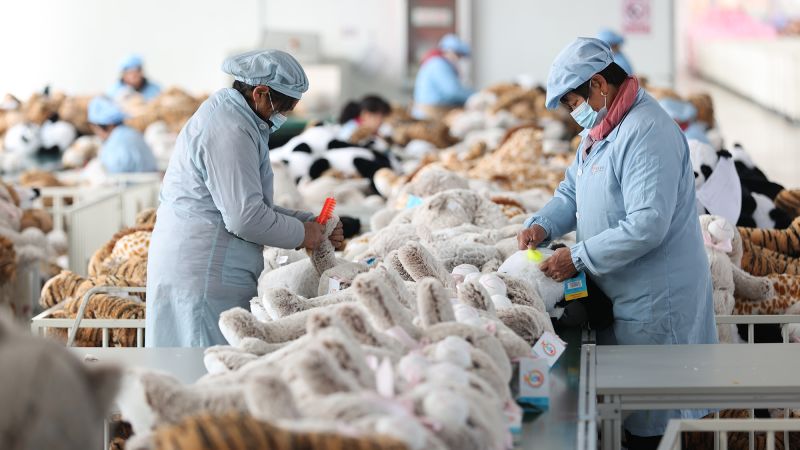The landscape of toy manufacturing in the United States has undergone a significant transformation since the implementation of tariffs under the Trump administration. Initially, during his first term, toys imported from China enjoyed a tariff exemption. However, that situation drastically changed as last month, Trump raised the tariff rates on Chinese imports to a staggering 20%, creating a substantial impact on the toy industry. This was further accentuated by a subsequent announcement that he proposed an additional 34% “reciprocal” tariff on Chinese goods, escalating the trade war that has ramifications beyond mere pricing. The cumulative effect of these tariffs now stands at an astonishing 145%, a figure that is likely to increase as both the U.S. and China engage in a retaliatory cycle of tariff hikes. This situation represents a dramatic shift, affecting various sectors, particularly families across America.
As tariffs rise, the implications become tangible for American households. The Toy Association, an influential industry group, reports that approximately 80% of toys sold in the United States are manufactured in China. This heavy reliance means that the increasing tariffs will invariably lead to rising prices, potentially transforming commonplace items into luxuries that many families may struggle to afford. Isaac Larian, the CEO of MGA Entertainment — a major toy manufacturer known for products like Bratz and L.O.L. Surprise! Dolls — emphasizes the severe impact on his business, stating that their pricing may have to increase by high double digits. He faces a dilemma: to maintain operations and keep his workforce stable, he must pass the increased costs onto consumers.
While the intention behind the tariffs is rooted in a desire to revive American manufacturing jobs, the reality is more complex. Larian articulates that retaliatory tariffs from China, which could be as high as 125%, may force him to lay off American workers at his Hudson, Ohio, factory, which employs around 700 individuals. Despite having some production capacity in the U.S., the challenges of labor availability and the higher costs associated with domestic manufacturing compared to China create formidable obstacles. For instance, while the factory can produce some toys, sourcing specialized materials domestically remains a struggle, as evidenced by Larian’s note on the lack of American facilities capable of producing doll hair.
The dominance of China in the toy manufacturing sector is a legacy that stretches back to the 1980s and 1990s, when companies began seeking lower-cost alternatives for production. Today, China accounts for a staggering 75% of the nearly $17.7 billion worth of toys imported to the U.S. annually, reflecting an entrenched reliance on its manufacturing capabilities. The lower labor rates in China, coupled with an existing infrastructure conducive to toy production, make it difficult for companies to transition away from this model. Moreover, many toy manufacturers operate as small businesses that benefit from established networks in China, finding it logistically and financially arduous to set up new operations in the U.S.
Jay Foreman, CEO of Basic Fun!, emphasizes the near impossibility of shifting production away from China. He argues that the consistency of production, tooling, and overall supply chain logistics are intricately tied to Chinese manufacturers. With the latest tariff hike, Foreman describes the situation as having escalated from a problem to a crisis for his company and the toy industry at large, threatening the overall supply and pricing of toys available in the market, and jeopardizing the survival of many firms.
The urgency of this situation is palpable as holiday orders commence. With the combined pressure of cost increases and delayed shipments due to uncertainty surrounding tariffs, companies like Basic Fun! have paused all shipments to mitigate financial exposure. They face a dire predicament: the absence of products leads to cash flow issues, making it difficult to cover operating expenses. In summary, the ramifications of the tariff policies are profound, extending far beyond trade numbers to touch on employment, consumer prices, and the very future of the American toy industry.



